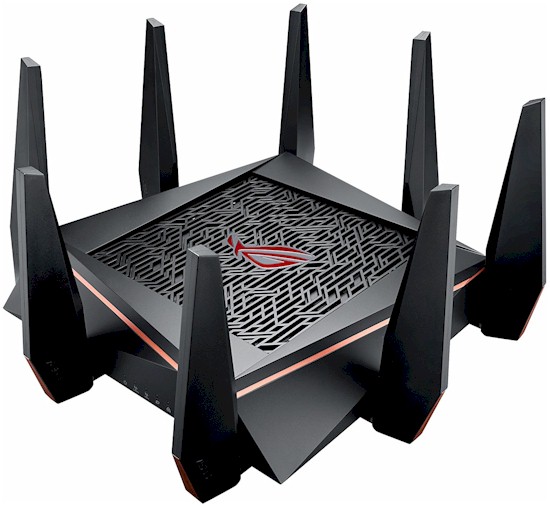
Read on SmallNetBuilder

Test results and ranking are up. Review to follow shortly.
Test results and ranking are up. Review to follow shortly.
Wait, on the summary page it says Mb/s but the USB results pages say MB/s.. Which is it?
Yes it should. Thanks for the catch. Corrected.Should it read "...still something wrong with the RT-AC5300's USB"?
Thanks Tim.
One thing I would add to the review: the beefier CPU might come in handy for anyone who runs a VPN (server or client) on the router, and have a fast Internet connection. So if one has to chose between the RT-AC5300 and the GT-AC5300, this can be an important factor if your Internet connection is faster than 60 Mbps.
Thanks Tim.
One thing I would add to the review: the beefier CPU might come in handy for anyone who runs a VPN (server or client) on the router, and have a fast Internet connection. So if one has to chose between the RT-AC5300 and the GT-AC5300, this can be an important factor if your Internet connection is faster than 60 Mbps.
Storage results are MB/s. Test process is described here.edit: Wait, on the summary page it says Mb/s but the USB results pages say MB/s.. Which is it?
I was too. That's why I opened it up and took pictures to confirm 1 GB .Your review said Rev 1.411 is the GT-ac5300 but that shows 512MBx 1, the Rev 1.311 which shows 512MBx2 which would be the 1 gig of memory the router has. I'm confused.
Even though its not as powerful as the Alpine, being an A53 low power part probably means it runs much cooler, and probably can run at peak performance longer when under high CPU load. The Alpine is like an oven.
Hm, were you able to confirm/measure 802.3ad functionality? It's non-functional on my unit.
There is no ad functionality on this router. There is in the Netgear X10 (runs great on dd-wtr) and one other router I can't remember the name of.

Welcome To SNBForums
SNBForums is a community for anyone who wants to learn about or discuss the latest in wireless routers, network storage and the ins and outs of building and maintaining a small network.
If you'd like to post a question, simply register and have at it!
While you're at it, please check out SmallNetBuilder for product reviews and our famous Router Charts, Ranker and plenty more!
